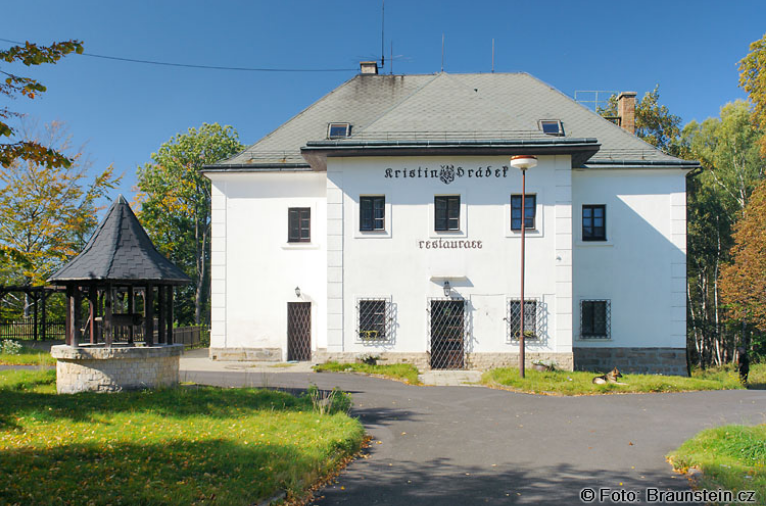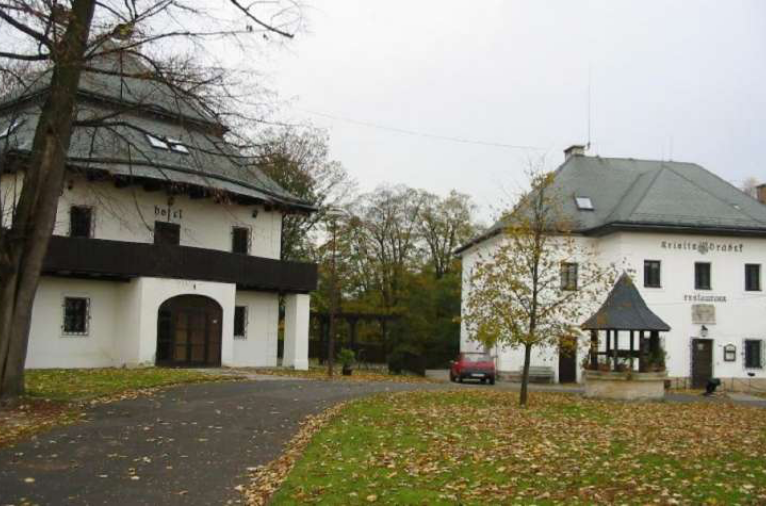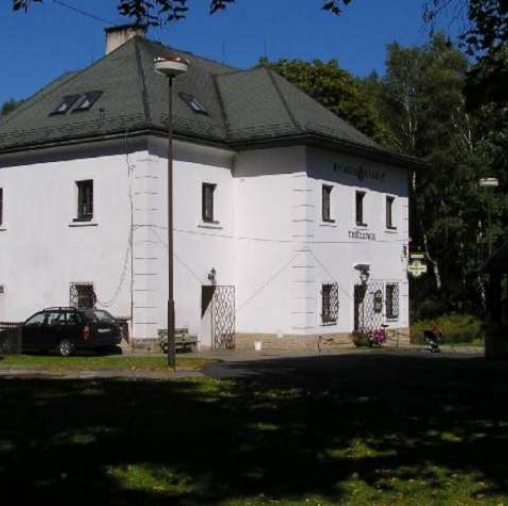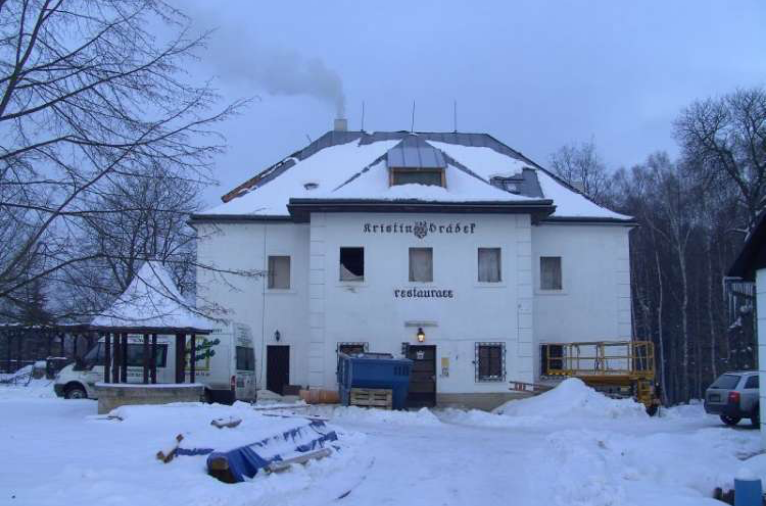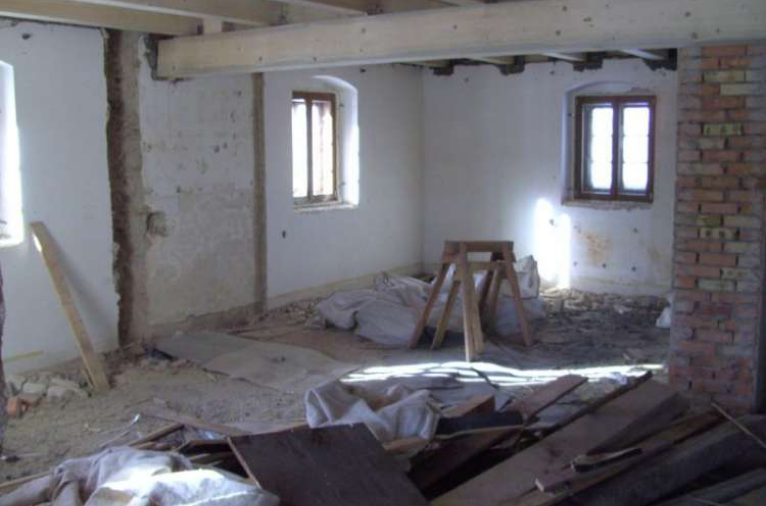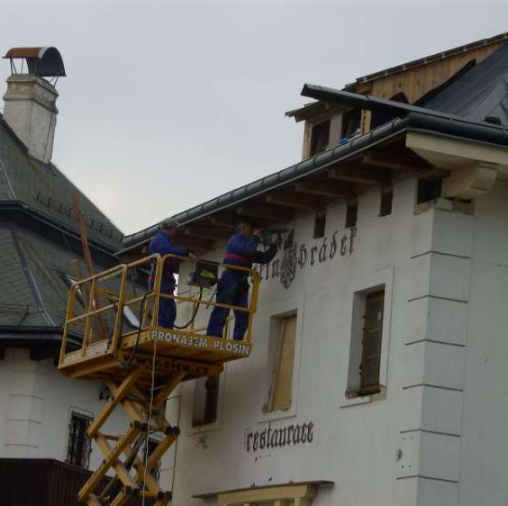History
The Kristin Castle (Christianenburg in German) is a small hunting lodge from the 18th century, which is located on the border of Bohemia and Saxony not far from Děčín and Děčínský Sněžník. It was built in the period 1734-1735 on the order of Duke Jan Josef Thun-Hohenstein (1711-1788) at a location that was known as Hühnerhügel. It was named Kristin Castle after Duke Jan Josef’s first wife, Marie Kristýna, born Duchess of Hohenzollern. Duke Jan Josef Thun gathered extensive property, which was acquired by the Thun clan in Bohemia in the 17th century, and was the only holder of the Thun dominions Klášterec nad Ohří, Děčín and Choltice. He is traditionally associated with the widespread liking for hunting for which he had ideal conditions particularly at the Děčín Estate.
In the 30s of the 18th century, he ordered the establishment of a hunting court in Podmokly, whose components were an armoury – Jagdzeughaus – i.e. a storage facility for hunting requirements and kennels. These premises that are currently the seat of the Děčín Museum and the State Archive, became the centre of Thun forest management and later the central directorate for management of the Thun family in Děčín.
The Děčín Estate with its centre at the Děčín Castle ranked among the most significant of the Thun assets. Its size was more than 10,000 hectares. The economy of the estate, respectively, the manor, included a beer brewery, distillery, quarries, winery, brick factory and farmyards. However, the larger share of the estate comprised an extensive forestry complex, which extended along the Czech-Saxony border from Tisa and Vysoký Sněžník to the Elbe Valley. Kristin Castle is just at the core of this area.
Kristin Castle should have served as a venue and facility for the hunting entertainment of the owners of the Děčín estate. A gamekeeper’s house with a small homestead probably existed here from the outset and Kristin Castle was also the centre of one of the Thun forest hunting grounds. A message from 1767 is on record that Duke Jan Josef Thun established the position of border guard at Kristin Castle. A certain Pankrác Müller was at the time supposed to have been in charge of ensuring proper maintenance of the border between the Děčín estate and Saxony, protect the Duke’s forests from thieves and at the same time guard the Kristin Castle itself. There were complicated and lengthy disputes over the border between Saxony and the Děčín Estate in the 17th and 18th centuries. The whole border was in the end fenced completely in order to prevent the passage of animals from one country to the other.
While the 18th century was the period of the highest glamour of local hunting, the first half of the 19th century did not have much favour for this entertainment. At the time, the keeper of Děčín was Duke František Antonín Thun-Hohenstein (1786-1873). In his era, the Děčín Estate had its unprecedented development and prosperity. Duke František Antonín managed his estate on the lines of the most modern management methods, supported education and emerging industry. At the time, the Děčín Estate ranked among the most modern and best managed noble dominions in the Czech lands. Due attention was naturally devoted to forest management also in this period.
The popularity of hunting returned to these hunting grounds only in the second half of the 19th century. In the period when the manor was owned by the Duke (prince from 1911) František Antonín Thun-Hohehstein (1847-1916), Czech Vice Regent and Austrian Prime Minister, Děčín was visited on hunting trips by the members of the most significant noble families in the monarchy – the Schwarzenberg, Lobkowicz, Nostitz families…
The Děčín hunting grounds were also visited by the members of the Habsburg family, for instance, Crown Prince Rudolf. Heir apparent František Ferdinand d’Este, known for his almost morbid hunting passion was also a frequent guest here.
Kristin Castle served its initial purpose and the builder family up to 1945. Its last owner from the Thun family was Prince František Antonín Thun-Hohenstein (1890-1973). In the thirties and forties of the 20th century, Kristin Hrádek was abundantly used and the princely family actually served as a summer residence. The last generation of the Thun family members who born in Bohemia still have many memories of life at Kristin Castle to date.
However, a fundamental change occurred in 1945. At the very end of the war, Kristin Castle was looted by the passing units under General Vlasov, and the local forests were also plundered. After the war, all the Thun assets were nationalised and the princely family had to leave Bohemia after more than three hundred years. The confiscated property passed to the State, the forests and forest management buildings, including Kristin Castle were taken over by Státní lesy.
Kristin Castle at the time comprised three buildings – forest management house (lesovna), which was used by the chief forester, gamekeeper’s house for two gamekeepers and a house intended for the temporary accommodation of forest workers. The gamekeeper’s house was completely adapted in 1948 and further renovation works were planned here. However, at the beginning of the 50s, the regime for protection of the state border with the then German Democratic Republic was made more strict and Kristin Castle found itself in the guarded border zone, deteriorated and was not far from the fate of many other objects found near the border, which were demolished in this area. It was possible to run forestry operations in the border zone only to a limited extent and under the supervision of the armed forces. The hunting grounds were closed. This strict regime lasted up to 1966. In the 70s, the dilapidated Kristin Castle building was partially renovated so that Státní lesy s.p. could use it for social purposes, and further modifications were conducted at the beginning of the 90s of the 20th century.
The current owners of Kristin Castle is the company Kristin Hrádek s. r. o., which purchased the premises from Lesy České republiky in 2009. The new owner sensitively reconstructed the whole premises to their initial historical appearance. The outcome is a hotel complex with an accommodation capacity of 34 beds in rooms of various sizes and luxury apartments.
Hotelová restaurace předkládá kvalitní českou kuchyni se zaměřením na původní recepturu nabízených pokrmů. Romantické okolí s krásnou přírodou určitě oceníte při pořádání svatebních hostin i různých firemních akcí včetně školení, pro které Vám budou k dispozici oddělené salonky a školicí místnosti s potřebnou prezentační technikou.


Do této atraktivní lokality s možností pěších aktivit, relaxace v okolních lesích, jízdy na kole, s vyhlášenou kuchyní a příjemnou obsluhou, se budete rádi vracet.



